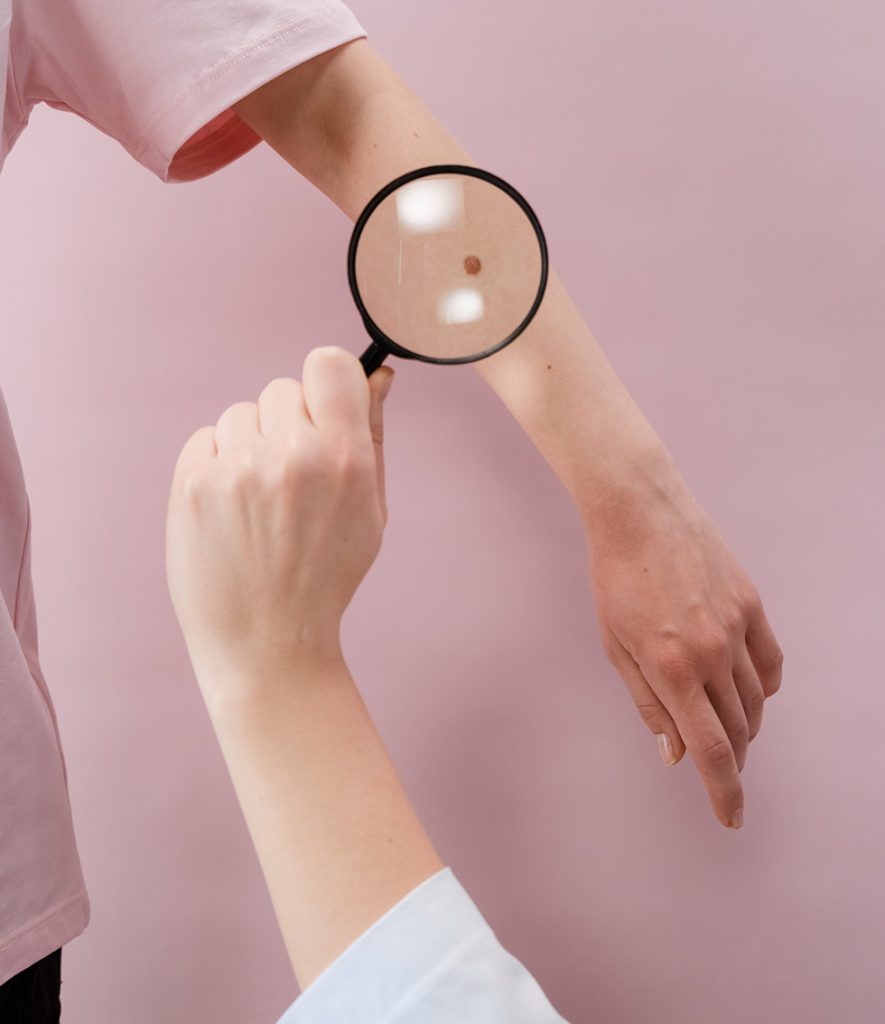Protect your skin potential skin cancer with early detection and professional treatment options.
Protect your skin potential skin cancer with early detection and professional treatment options.
Blog Article
Browsing Skin Cancer Cells Treatment: The Essential Duty of Mohs in Modern Dermatology Practices
Skin cancer cells, an overwhelming diagnosis, usually leaves clients grappling with countless treatment choices. As we discover the complexities of this treatment, one will appreciate its critical duty in skin cancer cells treatment.
Recognizing Skin Cancer Cells: Types and Threats
There are three primary types of skin cancer cells: Basic cell cancer, Squamous cell cancer, and Cancer malignancy. It accounts for only regarding 1% of skin cancer cases however triggers the huge bulk of skin cancer deaths. Risk factors consist of reasonable skin, history of sunburn, extreme sunlight direct exposure, living at high elevations or shut to the equator, having several moles, a household history of skin cancer, and damaged immune system.
What Is Mohs Surgical procedure and Just How It's Reinventing Skin Cancer Therapy
Despite the countless treatments presently offered for skin cancer cells, Mohs surgical treatment stands out as a groundbreaking and very effective option. Named after Frederic E. Mohs, the doctor who established the treatment, Mohs surgical treatment is a specific medical technique made use of to deal with skin cancer. During the procedure, slim layers of cancer-containing skin are gradually removed and examined till only cancer-free tissue continues to be. This technique allows the surgeon to validate that all cancer cells have been removed at the time of surgery. This level of accuracy, integrated with the ability to save as much healthy and balanced cells as possible, is transforming skin cancer therapy. Because of this, Mohs surgical treatment has ended up being a cornerstone of modern dermatology techniques.
The Benefits of Mohs Surgical Procedure Over Traditional Skin Cancer Treatments
Structure on the ingenious nature of Mohs surgical treatment, it's critical to consider its countless benefits over typical skin cancer cells treatments. Unlike guidelines, Mohs provides a higher cure price, commonly getting to 99% for first-time therapies and 94% for recurrent cancers. This accuracy is because of its distinct method of progressively getting rid of and checking out cells layers until just cancer-free cells continue to be (hair loss). Additionally, it decreases damage to healthy skin, bring about less scarring and improved aesthetic results. Mohs also gives immediate outcomes, removing the anxiety-ridden delay usual with other approaches. Last but not least, it's economical, as the surgery and tiny evaluation take place concurrently, getting rid of the need for extra research laboratory solutions. Hence, Mohs represents a considerable advancement in skin-related practices.
The Procedure of Mohs Surgical Treatment: What to Anticipate Throughout the Refine

Potential Negative Effects and Post-Operative Care of Mohs Surgical Procedure
Undergoing Mohs surgical procedure, like any other procedure, includes possible negative effects that people ought to be mindful of. Common adverse effects consist of pain, bruising, and swelling at the surgical procedure website. However, these are normally temporary and workable with non-prescription pain medication and ice bag. In rare situations, individuals might experience infection, bleeding, or an allergic reaction to the regional anesthetic. Post-operative treatment is crucial to healing and lessening adverse effects. This generally involves keeping the wound clean and dry, taking proposed drugs, and staying clear of strenuous activities. Clients ought to additionally participate in all follow-up appointments for wound treatment and monitoring. In many cases, additional treatments may be necessary to ensure complete removal of the cancerous cells. Sticking to these post-operative treatment standards can greatly boost recuperation and end results.
Conclusion

Report this page